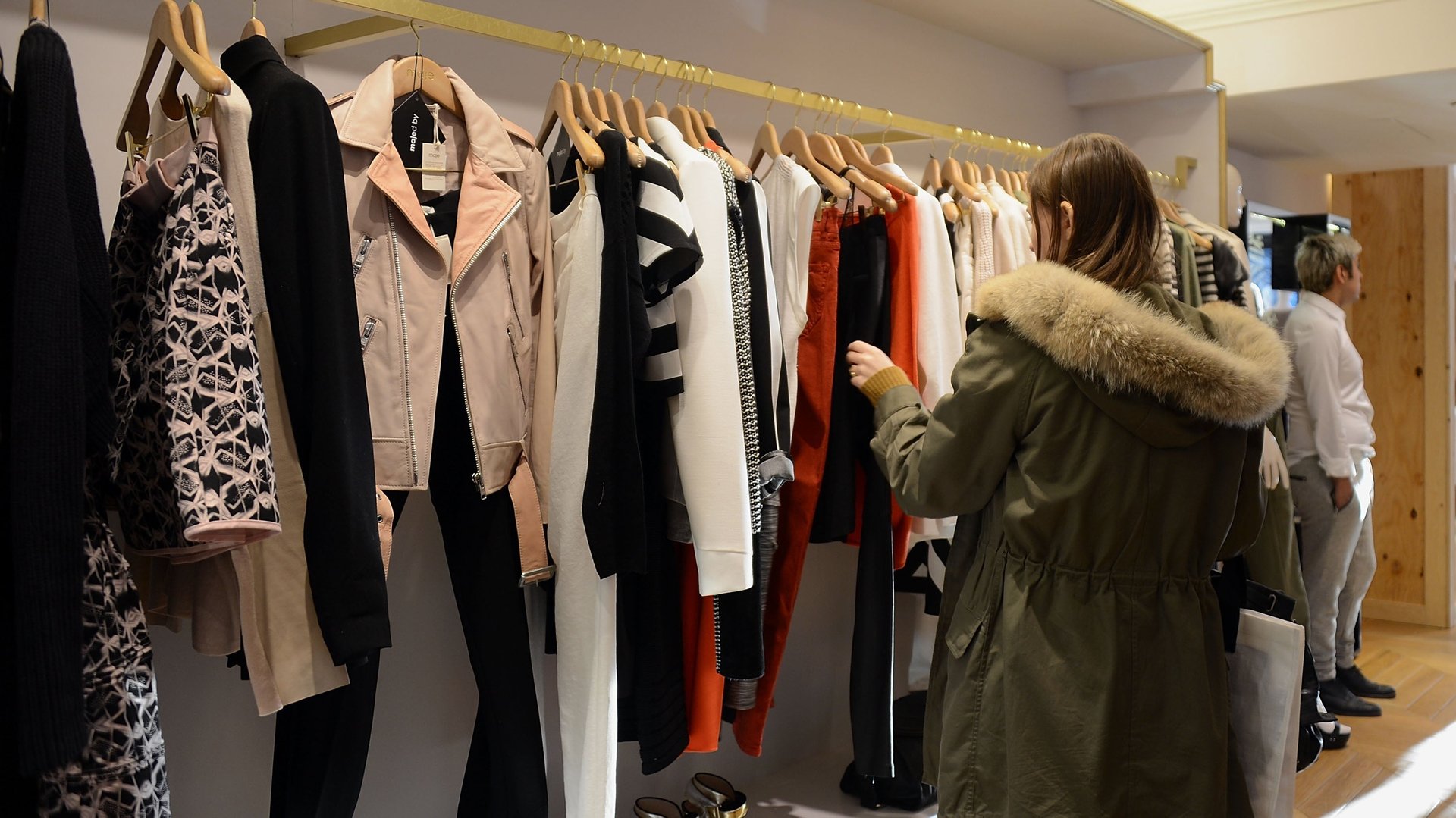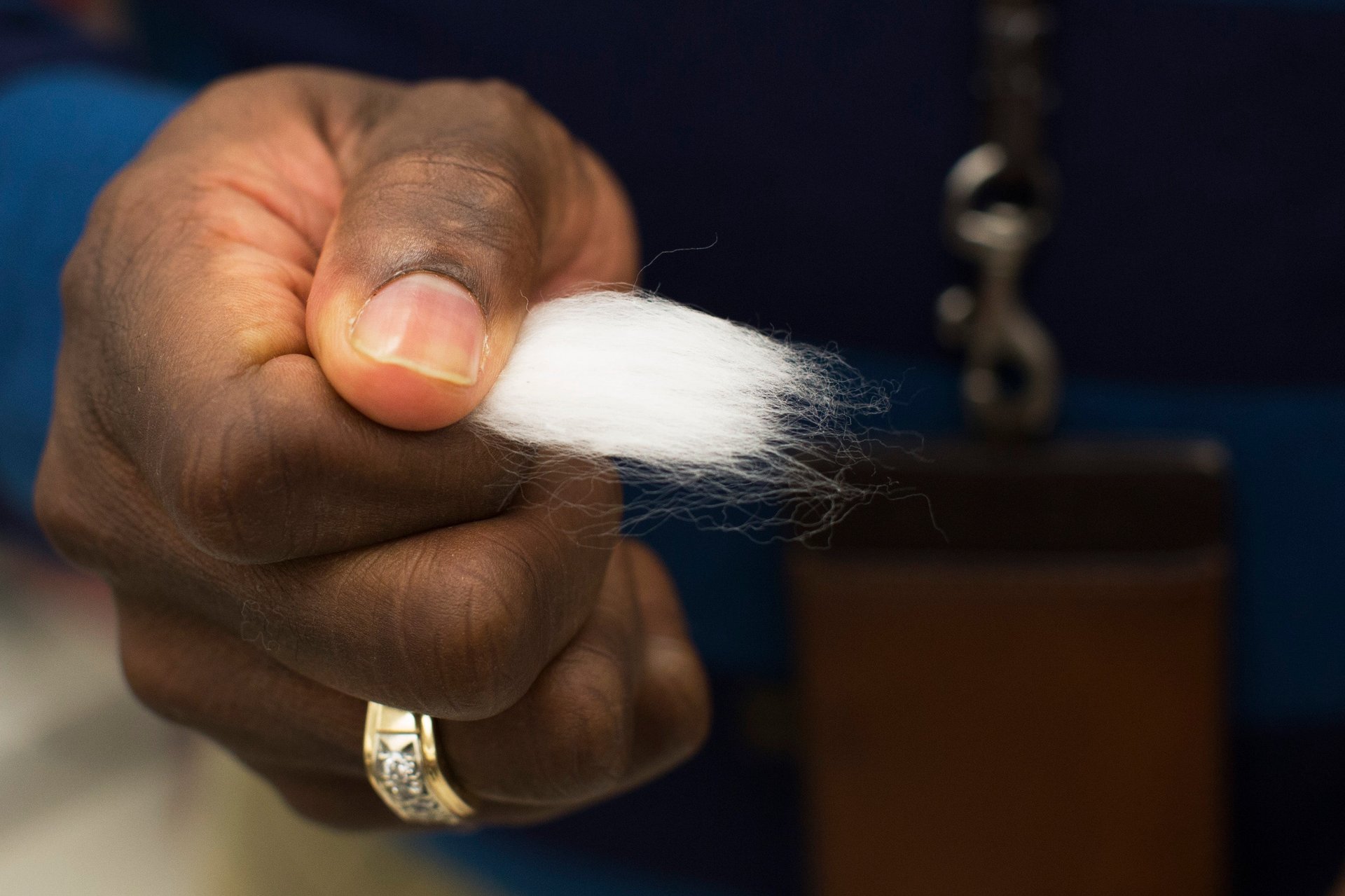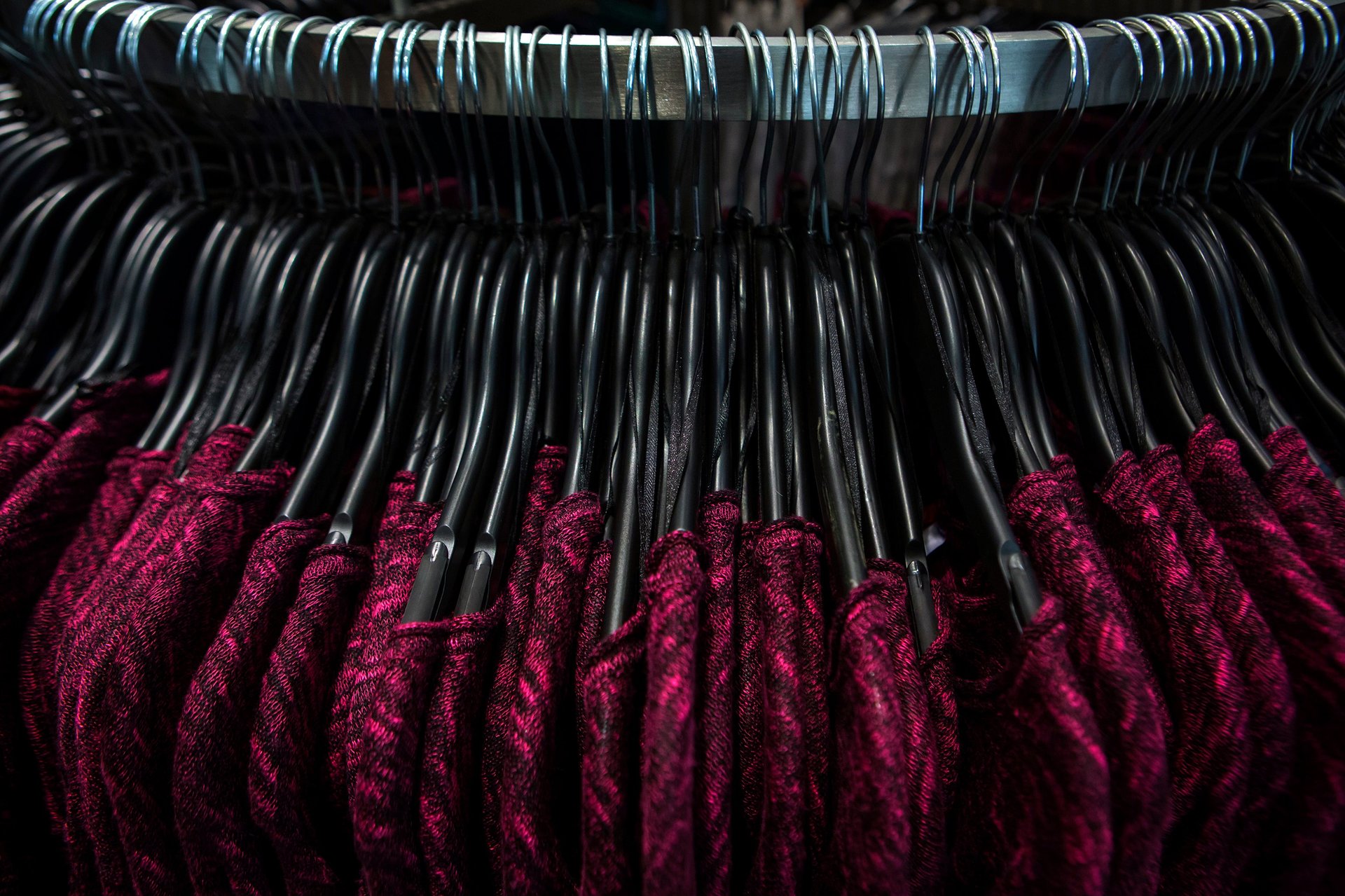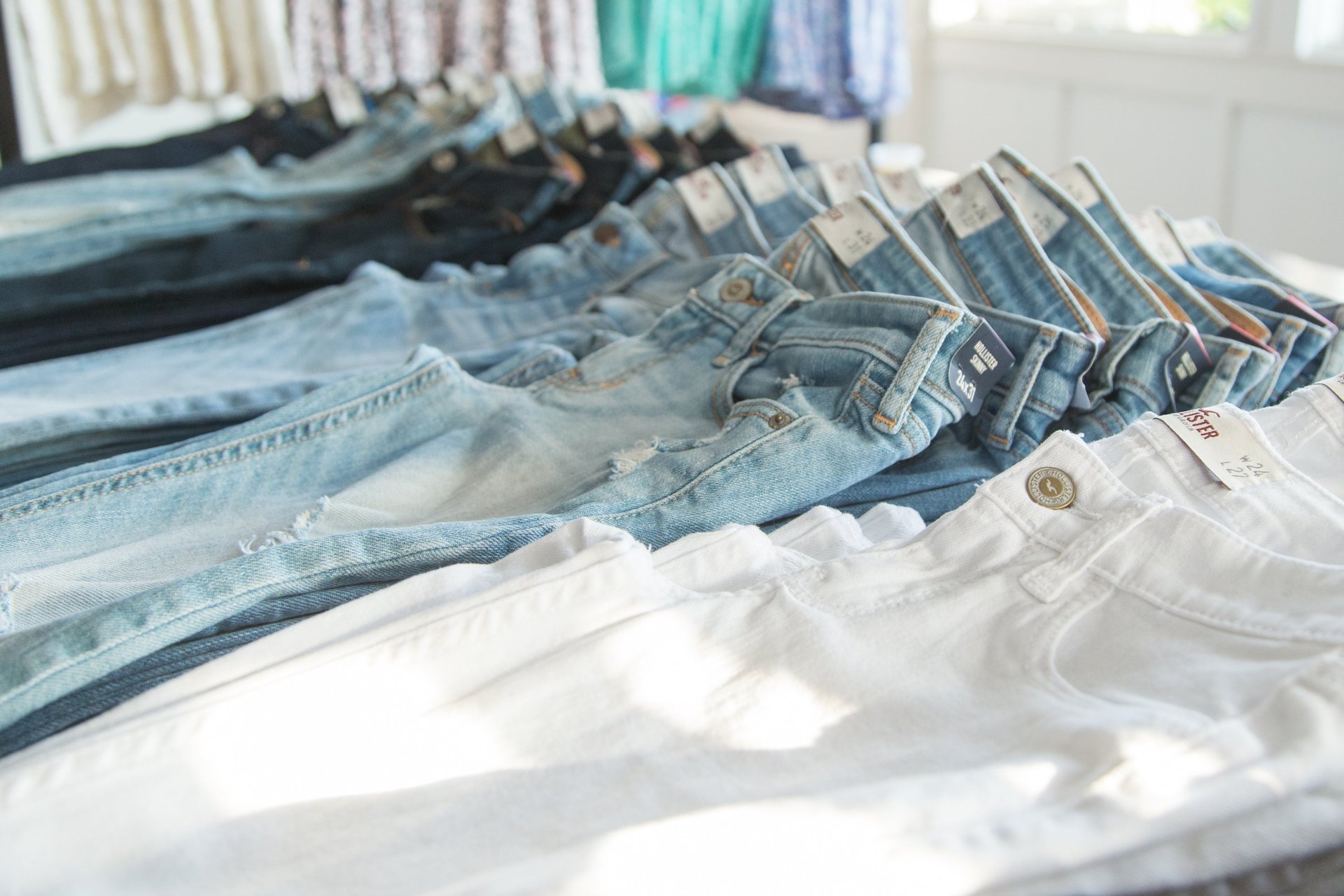Pro-tips for buying clothes that will last years, not weeks
Maybe it has happened to you before: Your new t-shirt looks like it has suddenly aged two years with one wash. A hole has opened in the crotch of the jeans you’ve only had for six months. A thread is hanging from your shirt after just a few wears, threatening a much greater unraveling.


Maybe it has happened to you before: Your new t-shirt looks like it has suddenly aged two years with one wash. A hole has opened in the crotch of the jeans you’ve only had for six months. A thread is hanging from your shirt after just a few wears, threatening a much greater unraveling.
Not all clothing is made to last. The quality of our clothes is in decline, some argue, and the culprit is a global fashion system that prioritizes lightning-fast production and a cheap price tag. We shop constantly, and always want more new stuff, creating a culture of disposable, low-quality clothes.
But quitting fast, cheap fashion is easier said than done. To start with, if we want to buy better clothes that last us longer, we have to know what to look for when we’re shopping. The reality is that many of us just don’t.
“My worry is that, with the kind of crappy quality fast fashion that dominates the garments available to us today, there’s a whole generation growing up that don’t really have any sense of what makes a good-quality fabric and what makes a good-quality garment,” says Timo Rissanen, co-author of Zero Waste Fashion Design and an assistant professor of fashion design and sustainability at Parsons School of Design in New York.
The good news is that you don’t have to be a clothing expert to judge whether that next item you’re thinking of buying is good quality or not. You may need to take some time to learn what quality looks and feels like, but here are a few basic tips from Rissanen and other sources that can help you figure out whether an item is made to last.
Check the label
A garment’s fabric content matters. Many people prefer fibers extracted from plants and animals as cotton, wool, linen, or silk, but synthetics make up a growing share of our wardrobes in the form of polyester, acrylic, spandex, rayon, and other manmade fibers spun from plastics and petrochemicals.
Technology is improving their texture, luster, and drape, and some of these synthetic fabrics offer qualities such as stretch. They’re often blended with natural materials to create fabrics that feel a lot like natural fibers. But these blended fabrics often don’t improve with repeated laundering the way natural fibers can. When you dry a cotton-polyester blend garment in the dryer, for example, the two materials can shrink at different rates, slightly changing the shape of the garment.
Even a garment labeled 100% cotton can be low-quality. Fabrics can be made cheaply if they use low-grade fibers, which typically aren’t very strong, or if there isn’t a lot of fiber in the cloth. To cut labor costs, manufacturers may cut corners to produce clothing more quickly—resulting in clothing that’s poorly made. That’s why its useful to learn how good quality looks and feels.

Let your hand guide you
The best way to judge a fabric, knit or woven, is to touch it. Does it feel thin, brittle, and rough? Or does it feel smooth, soft, and substantial?
That final trait matters because, as Rissanen explains, “The more fiber there is, the more likely it’s going to last longer.” A fabric doesn’t necessarily need to be heavy to be good. If the yarns are tightly packed but thin, the cloth can still be lightweight. What you’re looking for is density.
A look at what’s in your closet can also be instructive. Which items have held up well for you, and which haven’t? Feel and examine your own clothes to get a sense of what has allowed some of your garments to age well (given your personal style, rotation of clothes, and laundry habits). Then look for those qualities in your next purchase.
Hold it up to the light, and stretch it
You can’t always judge a fabric from touch alone, however. Rissanen says manufacturers may add chemicals, or something as simple as starch, to make cloth feel heftier and smoother, creating a nice surface on that button-up or t-shirt on the hanger that can disappear as soon as you wash it. (On the other hand, pre-washed items, such as jeans, give you a good sense of how the item will feel after you’ve put it through the laundry yourself.) He suggests also holding the fabric up to the light and giving it a close look, especially with an item such as a button-up shirt.
“You do get a sense of the weight as well when you look at it against the light, and also the density of the weave,” he says.
Pay attention to the individual yarns, too. The more tightly spun they appear, the better.

For knits in particular, there is another way to test them. Try stretching a small part of the fabric in an inconspicuous spot. It should ideally bounce back to its original shape. If it doesn’t in that moment, it won’t when you wear it either, meaning it may quickly start to look stretched out and misshapen.
Some knits, even very expensive ones, are intended to be gauzy. That quality can be desirable, but just be aware that some stretching, or even holes, may be inevitable.
Look at the seams, inside and outside
Fabric, of course, isn’t the only element that matters. It’s important to check the seams holding the garment together. The stitches should be even, closely spaced, and lying flat on the fabric.
Don’t just look at them on the outside of the garment. Have a look inside. Check out the hem on a shirt, for instance, or the inside of the crotch on a pair of pants. If the seams look sloppy, or if there are spots where they appear loose or stitched over multiple times, those are warning signs.
Even a stitch that is flat on the surface of the garment but bubbling on the inside may be cause for concern. A sewing machine uses two threads to create a stitch, and they can pull on the fabric differently if the tension between them isn’t balanced. If the surface thread is too tight and the thread on the underside too loose, for instance, the stitch may look fine from the outside, but it won’t actually be stable.
“It just has no strength to withstand washing or a lot of movement,” Rissanen says. “The minute you start moving your arms or start walking in a pair of trousers, that would start to show up.”
Watch for cut corners
Other telltale signs of poor quality aren’t always easy to spot, because they’re often the result of steps that were skipped. For example, Rissanen notes that the best way to construct a crotch seam would be to use two stitches of different lengths, one run over top of the other. It reinforces the crotch seam, which is important because it’s one of the most high-stress areas on a pair of trousers. “I don’t know that that would get done on a lot of particularly cheaper trousers,” he says.

Button holes should be sturdy, not flimsy and with fraying threads.
The fabric of a garment should be cut either straight along the grain, or in the case of a bias cut, on a clear angle, usually 45 degrees, which allows for the fabric to stretch. If it isn’t cut properly, the garment can pull out of shape with wear.
Dress-shirt collars and cuffs, waistbands on pants, and other parts of other garments should ideally have interfacing, which is a stiff layer of fabric used to create structure that you can feel when handling the garment. Without it, these areas can become misshapen over time.
Any of these issues on its own is a warning sign, but they also generally indicate that the product was made hastily and probably not with quality in mind. On the flip side of that, if the inside of a garment looks just as clean and finished as the exterior, it typically shows that the item was made with care. High-end brands will even put what’s called “binding” on seams, so that there are no exposed fabric edges inside the garment.
Good quality will probably cost you
The reality is that if you want good quality, you’ll most likely have to pay for it. Consider spending enough that it stings a little.
But there’s one notable caveat: While a very cheap item is usually going to be low-quality, a high price tag doesn’t necessarily indicate good quality. Rissanen says he has seen expensive clothing that wasn’t particularly well made, which is part of the reason it’s important to know what to look for. (I personally just had a seam open on some pricey designer pants because the thread broke and the seam hadn’t been reinforced.)
That being said, cheap clothes are cheap for a reason. ”The two biggest costs of making a garment are the fabric and the labor,” Rissanen explains. “To get the price down, you push one or both of those down.”
Fabrics that start from lower-grade materials are cheaper, or a manufacturer may use less fiber to keep price down.
Manufacturers lower labor costs by cutting the sorts of corners on garment construction mentioned earlier to churn out more clothes per hour, or they may just not be paying workers much. In those cases factories may be doing everything so cheaply that they’re also ignoring basic standards of safety. Products made in developing countries may be more likely to have used exploitative labor, but it’s present everywhere. (Incidentally, “made in China” is also by no means an indication of low quality.)
Manufacturers also reduce costs in sneakier ways, such as by using cheap thread that can break under moderate stress. For a company making millions of shirts or pairs of pants, the savings can be substantial, and even an educated consumer wouldn’t be able to tell by looking at the thread. But under a bit of strain the thread can snap.
What to look for in cashmere
The proliferation of cheaper cashmere products in recent years has left many shoppers wondering how to know whether they’re getting a great deal or a sweater that will pill up by the end of the season. According to Yvonne Watson, the associate dean of fashion at Parsons School of Design, companies may blend different grades of cashmere (determined by how long and fine the fibers are) to offer something that feels fairly nice and isn’t expensive. This kind of cashmere, though, can pill and wear out more quickly than the good stuff, which improves with age.
The best cashmere is full, with an even, compact knit structure. ”You can often tell by the weight and feel,” Watson says. “If it feels thin and not filled out, that’s a good indicator of [low] quality.”
Here’s another thing to watch for, and it might not be what you’d expect: If a brand-new cashmere sweater feels extremely soft, that’s a warning sign. As Shilpa Shah, co-founder of the cashmere-focused brand Cuyana, recently told Racked for an informative story on how much to spend on cashmere, manufacturers may heavily wash lower-grade cashmere to give it the softness shoppers are seeking. But this overwashing can cause it to be much more fragile and pill easily.
The best cashmere isn’t its softest at the time or purchase, but it softens over time. Inexpensive cashmere like that sold by Uniqlo is fine for the price (the company declined to tell Racked what grade of cashmere it uses, but an expert judged it was likely a blend of Grade A and Grade B). But it isn’t going to age as well as a sweater made of the best cashmere, which actually doesn’t need to cost a fortune. Watson is a fan of Naadam, which sells high-quality cashmere sweaters for $225.
Now wear it as long as you can
Hopefully these tips will help you to buy better, but they’re only useful if you’re shopping for clothes you’re going to wear for years. Even a poorly made garment can hold up fine if you use it just a handful of times before tossing it out. But that isn’t going to give you anywhere near the best value for your money, and it’s just plain bad for the planet, even if you recycle or donate your unwanted clothes.
When you lose a button or a seam splits, don’t discard or give away the garment. Learn some simple sewing techniques, and acquaint yourself with a local tailor.
Of course to wear a garment for years, you’ll have to really like its style—so choose judiciously, and avoid impulse shopping based on price. Ask yourself some simple questions to figure out how much you’ll wear that item of clothing you’re thinking of buying. Then take a few minutes to really feel and look at the fabric, to check out the seams, and to see if you think it’ll be something you hand down to your children or soon send to the landfill.